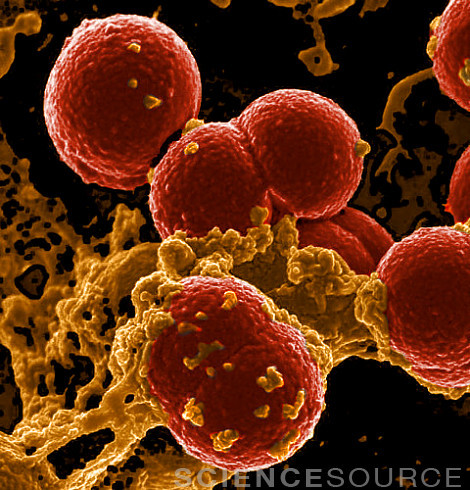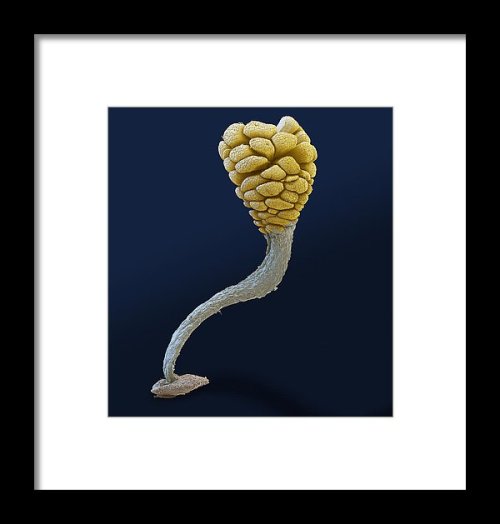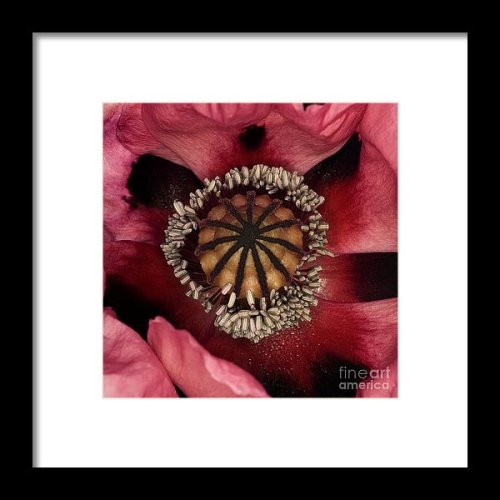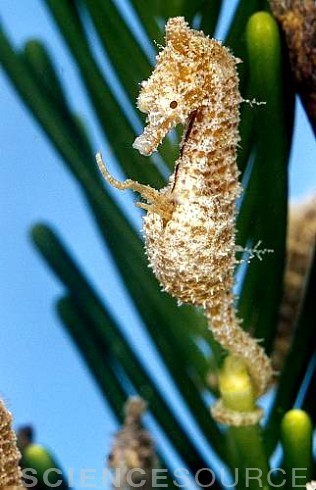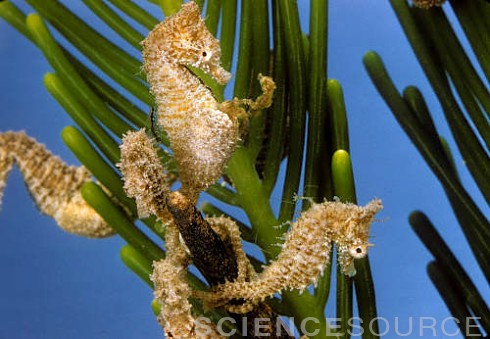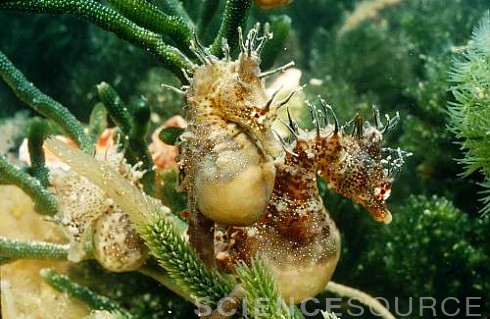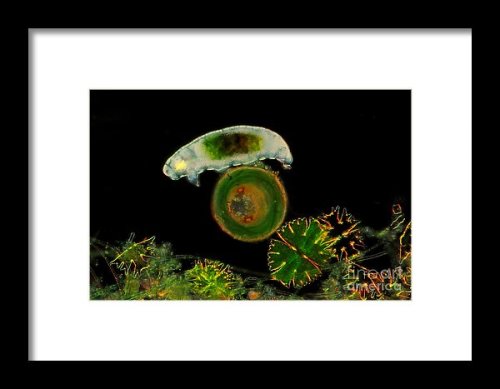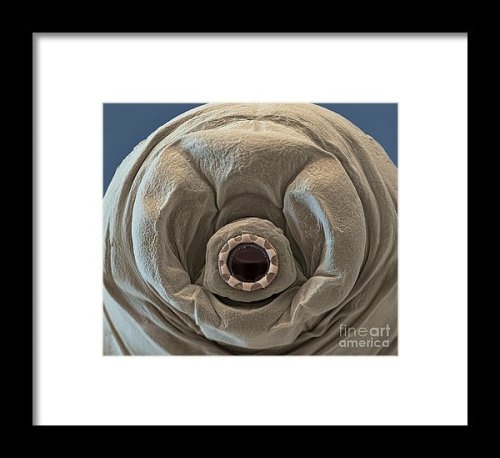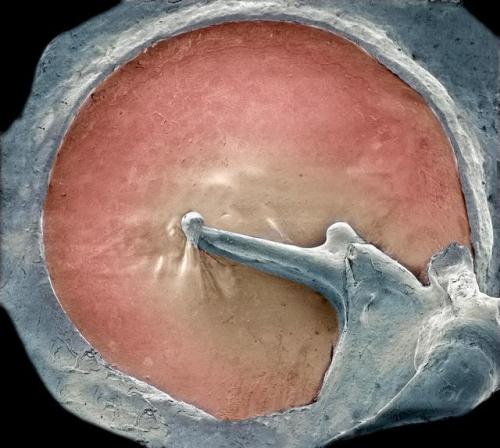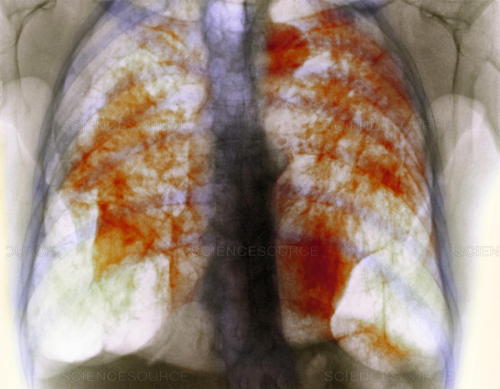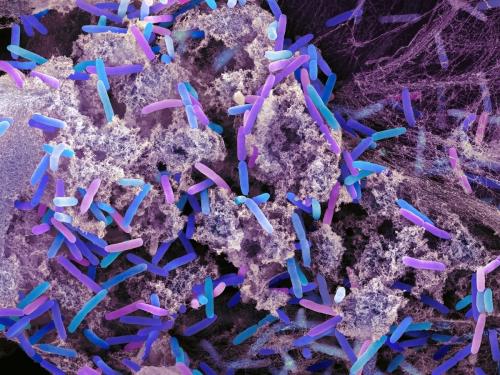#science source
Plague Is Found in New Mexico. Again.
by Liam Stack /NY Times
The New Mexico Department of Health said this week that two women were found to have plague, bringing the total number of people this year in the state known to have the disease to three.
All three patients, a 63-year-old man and two women, ages 52 and 62, were treated at hospitals in the Santa Fe area and released after a few days, said Paul Rhien, a health department spokesman.
See More Images of Yersinia Pestis
Health officials in New Mexico have more experience with plague than many might expect: Every year for the last few years, a handful of people in New Mexico have come down with plague. One person has died.
While the word “plague” may conjure images of medieval cities laid to waste by the Black Death, the disease is still a part of the modern world. It is much less common than it once was, but it is no less serious.
Post link
How Do Fireworks Get Their Colors? It’s Element-ary!
Those beautiful explosions in the sky that take our breath away are powered by chemistry. Fireworks display different colors due to the various kinds of materials packed inside them. For example, the image above shows positive results of flame tests for various chemical elements. A flame test is an analytic procedure used in chemistry to detect the presence of certain elements, primarily metal ions, based on each element’s characteristic emission spectrum.
Click here to see more Flame Test images
When certain metals are heated, their electrons momentarily jump to a higher energy level. When these electrons settle back down to their original energy level, the cooling process emits a photon. Depending on the material, the photon will have a different wavelength and, therefor, will emit a different color. The flame colors vary for different elements and can be used to identify unknown substances. The ones shown above are (from left to right): copper (green), lithium (red), strontium (red), sodium (yellow), copper (green), and potassium (lilac).
Images above © SPL / Science Source
Post link
Brain Cell Transplants Are Being Tested Once Again For Parkinson’s
by Jon Hamilton / NPR Health
Researchers are working to revive a radical treatment for Parkinson’s disease.
The treatment involves transplanting healthy brain cells to replace cells killed off by the disease. It’s an approach that was tried decades ago and then set aside after disappointing results.
Now, groups in Europe, the U.S. and Asia are preparing to try again, using cells they believe are safer and more effective.
“There have been massive advances,” says Claire Henchcliffe, a neurologist at Weill Cornell Medicine in New York. “I’m optimistic.”
“We are very optimistic about ability of [the new] cells to improve patients’ symptoms,” says Viviane Tabar, a neurosurgeon and stem cell biologist at Memorial Sloan Kettering Cancer Center in New York.
Henchcliffe and Tabar joined several other prominent scientists to describe plans to revive brain cell transplants during a session Tuesday at the International Society for Stem Cell Research meeting in Boston.
Their upbeat message marks a dramatic turnaround for the approach.
During the 1980s and 1990s, researchers used cells taken directly from the brains of aborted fetuses to treat hundreds of Parkinson’s patients. The goal was to halt the disease.
Parkinson’s destroys brain cells that make a substance called dopamine. Without enough dopamine, nerve cells can’t communicate with muscles, and people can develop tremors, have difficulty walking and other symptoms.
Image above © Roger J. Bick & Brian J. Poindexter / Science Source
Post link
This Thermographic Image Confirms It…
SUNGLASSES ARE INDEED COOL
Happy National Sunglasses Day!!
Image SL8285 - Man wearing sunglasses, thermogram. A thermogram shows the variation in temperature on the surface of an object, measured by the long-wave infrared radiation it emits. The temperature scale is color-coded and runs from purple (coldest), through blue, green, yellow and orange to red (warmest).
Purchase a Beach Towel, Tote Bag, T-Shirt or Poster
© Tony McConnell / Science Source
Post link
Image JC3202 (Neutrophil Ingesting MRSA Bacteria)
Colorized scanning electron micrograph of Neutrophil white blood cells (light orange) ingesting Methicillin-Resistant Staphylococcus Aureus bacteria (deep red).
Methicillin-Resistant Staphylococcus Aureus (MRSA), also called multidrug-resistant staphylococcus aureus and oxacillin-resistant staphylococcus aureus (ORSA). This bacterium is responsible for several difficult-to-treat infections in humans.
MRSA is any strain of Staphylococcus aureus that has developed resistance to beta-lactam antibiotics, like penicillins and cephalosporins. Strains unable to resist these antibiotics are classified as methicillin-sensitive Staphylococcus aureus, or MSSA.
MRSA is especially troublesome in hospitals and nursing homes, where patients with open wounds, invasive devices, and weakened immune systems are at greater risk of infection than the general public. If not treated quickly, MRSA infections can cause sepsis and death.
It is usually spread by direct contact with an infected wound or from contaminated hands, usually those of healthcare providers. Also, people who carry MRSA but do not have signs of infection can spread the bacteria to others.
The only way to know if MRSA is the cause of an infection is to perform a laboratory culture of the bacteria. Obtaining bacteria to culture is a procedure done by a doctor or nurse.
© NIAID / Science Source
Post link
FLOWER PORN
You’ve likely heard the terms, Petals, Stamen, Pistil, & Pollen? These are all parts of a flower. Yup, we’re talking about Plant Sex. It’s going on right now in a garden near you and summer is just getting started.
Visit our PRINT SHOP for Prints, Pillows, Phonecases & other photo products.
BUY ‘FLOWER PORN’ FRAMED PRINTS
BUY ‘FLOWER PORN’ THROW PILLOWS
BUY ‘FLOWER PORN’ SHOWER CURTAINS
BUY ‘FLOWER PORN’ DUVET COVERS
Post link
Cephalopods In Glass Houses…
This Veined Octopus (Amphioctopus marginatus) is trying to form a protective shelter from two pieces of a broken glass.
This species of octopus is also known as the ‘coconut octopus’, as it is often found using two discarded coconut shells to hide in. Like hermit crabs with shells, it will actively investigate other items for protective potential.
Here the octopus tries in vain to make two broken glass halves fit together to form a little protective fort. Filmed in the Lembeh Strait, Sulawesi, Indonesia.
Video above © Peter Scoones / Science Source
Because Bees Don’t Have Pockets
The pollen basket or Corbicula (plural corbiculae) is part of the tibia on the hind legs of certain species of bees. They use the structure in harvesting pollen and returning it to the nest or hive. Bees in four tribes of the family Apidae, subfamily Apinae: the honey bees, bumblebees, stingless bees, and orchid bees have corbiculae.
The corbicula is a polished cavity surrounded by a fringe of hairs, into which the bee collects the pollen; most other bees possess a structure called the scopa, which is similar in function, but is a dense mass of branched hairs into which pollen is pressed, with pollen grains held in place in the narrow spaces between the hairs.
A honey bee moistens the forelegs with its protruding tongue and brushes the pollen that has collected on its head, body and forward appendages to the hind legs. The pollen is transferred to the pollen comb on the hind legs and then combed, pressed, compacted, and transferred to the corbicula on the outside surface of the tibia of the hind legs.
Top photo: Honeybee on flower. © James H. Robinson / Science Source
Lower photo: SEM, bee pollen basket © Dennis Kunkel / Science Source
Post link
Fatherhood And The Pregnant Male Seahorse!
Happy Fathers Day to a dad who makes us all proud. A father who knows how to take one for the team. We’re just glad that we’re not him! After courtship, the female deposits eggs in the male’s pouch, where they are fertilized, develop and hatch. The female seahorse deposits up to 1,500 eggs in the male’s ventral (front facing) pouch. The male carries the eggs for 9 to 45 days until the baby seahorses emerge fully developed, but very small. Once the young are released into the water, the male’s role is done and he offers no further care and often mates again within hours or days during the breeding season. Some may call you Mr. Mom but you’ll always be “Dear Old Dad” in our eyes.
See more of our Seahorse images
Above images © Dr. Paul Zahl / Science Source
7K2080 (Male Seahorse giving birth)
Post link
I Am A Water Bear, Hear Me Roar
Water bears (or tardigrades) are tiny invertebrates that live in aquatic and semi-aquatic habitats such as lichen and damp moss. They require water to obtain oxygen by gas exchange.
In dry conditions, they can enter a cryptobiotic state of desiccation, known as a tun, to survive. In this state, water bears can survive for up to a decade.
Water bears are found throughout the world, including regions of extreme temperature and pressure, like hot springs and deep underwater. They can even survive high levels of radiation and the vacuum of space.
BUY WATER BEAR SHOWER CURTAINS
BUY WATER BEAR BEACH TOWELS
BUY WATER BEAR WEEKENDER TOTE BAGS
BUY WATER BEAR SMART PHONE CHARGERS
Post link
Just Small Genetic Tweaks To Chinese Bird Flu Virus Could Fuel A Human Pandemic
by Nell Greenfieldboyce / NPR Health
A study published Thursday shows how a bird flu virus that’s sickening and killing people in China could mutate to potentially become more contagious.
Just three changes could be enough to do the trick, scientists report in the journal PLOS Pathogens.
And the news comes just as federal officials are getting ready to lift a moratorium on controversial lab experiments that would deliberately create flu viruses with mutations like these.

Public health officials have been worried about this bird flu virus, called H7N9, because it’s known to have infected more than 1,500 people — and killed 40 percent of them. So far, unlike other strains that more commonly infect humans, this deadly virus does not spread easily between people.
The fear is that if it mutates in a way that lets it spread more easily, the virus will sweep around the globe and take a heavy toll, because people’s immune systems haven’t ever been exposed to this type of flu before. Past pandemics caused by novel flu viruses jumping from animals or birds into people have killed millions.
Post link
Look What You’ve Done. I’m Molting…MOLTING!!!
Adult female Cicadas lay eggs inside the bark of trees by means of an ovipositor. When the eggs hatch, the newly hatched nymphs drop to the ground and burrow.
Cicadas live underground as nymphs for most of their lives at depths down to about 2.5 metres (8 ft). Nymphs have strong front legs for digging and excavating chambers in close proximity to roots where they feed on xylem sap. In the process, their bodies and interior of the burrow become coated in anal fluids. In wet habitats, larger species construct mud towers above ground in order to aerate their burrows.
In the final nymphal instar, they construct an exit tunnel to the surface and emerge. They then molt (shed their skins) on a nearby plant for the last time, and emerge as adults. The exuviae or abandoned exoskeletons remain, still clinging to the bark of the tree.
Most cicadas go through a life cycle that lasts from two to five years. Some species have much longer life cycles, such as the North American genus, Magicicada, which has a number of distinct “broods” that go through either a 17-year or, in some parts of the world, a 13-year life cycle.
These long life cycles may have developed as a response to predators, such as the cicada killer wasp and praying mantis. A specialist predator with a shorter life cycle of at least two years could not reliably prey upon the cicadas.
The Dinosaur-Killing Asteroid Acidified the Ocean in a Flash
by Lucas Joel / NY Times
What happened to the dinosaurs when an asteroid about six miles wide struck Earth some 66 million years ago in what is today Mexico is well known: It wiped them out. But the exact fate of our planet’s diverse ocean dwellers at the time, shelly ammonites, giant mosasaurs and other sea creatures, has not been as well understood.
New research now makes the case that the same incident that helped bring an end to the reign of the dinosaurs also acidified the planet’s oceans, disrupted the food chain that sustained life underwater and resulted in a mass extinction. The study, published Monday in Proceedings of the National Academy of Sciences, aims to shore up the hypothesis that the Chicxulub event’s destruction of marine life, the result of sulfur-rich rocks depositing acid rain into the oceans, was just as severe as the fire and fury it brought to land.
“It’s flash acidification, and it transformed ecosystems for millions of years,” said Noah Planavsky, a biogeochemist at Yale and one of the study’s authors. “We were shocked that we actually found this.”
The impact of the Chicxulub asteroid, so named for the crater it carved out around the Gulf of Mexico, sent columns of rock into Earth’s atmosphere, incinerated the planet’s forests and drove tsunamis far across the oceans. But the connection between the crash and the marine extinction has been less solid.
Image above © Detlev van Ravenswaay / Science Source
Post link
Keeping Your Blood Sugar In Check Could Lower Your Alzheimer’s Risk
by Jon Hamilton / NPR Health
Brain scientists are offering a new reason to control blood sugar levels: It might help lower your risk of developing Alzheimer’s disease.
“There’s many reasons to get blood sugar under control,” says David Holtzman, chairman of neurology at Washington University in St. Louis. “But this is certainly one.”
Holtzman moderated a panel Sunday at the Society for Neuroscience meeting in Chicago that featured new research exploring the links between Alzheimer’s and diabetes.
“The risk for dementia is elevated about twofold in people who have diabetes or metabolic syndrome (a group of risk factors that often precedes diabetes),” Holtzman says. “But what’s not been clear is, what’s the connection?”
One possibility involves the way the brain metabolizes sugar, says Liqin Zhao, an associate professor in the school of pharmacy at the University of Kansas.
Image above © DOE / Science Source
Post link
Video Clip SS276149 (Tesla Coil Arching With Man’s Tongue)
Footage of an electrical discharge, produced from a Tesla coil, arching towards a man’s tongue.
A Tesla coil is an electrical resonant transformer circuit designed by inventor Nikola Tesla in 1891. It is used to produce high-voltage, low-current, high frequency alternating-current electricity.
View More Tesla Coil Images & Videos
He used these coils to conduct innovative experiments in electrical lighting, phosphorescence, X-ray generation, high frequency alternating current phenomena, electrotherapy, and the transmission of electrical energy without wires.
Today their main use is for entertainment and educational displays, although small coils are still used today as leak detectors for high vacuum systems.
© Rhys Lewis & Minh Tan Pham, AHS, DECD, UNISA / Science Source
Video Clip SS220029 (Zoom Into Hubble Ultra Deep Field)
In 2003, Hubble Stared Into A Tiny Patch Of Darkness…
The original HUDF image was taken in 2004, in a tiny patch of the sky in the constellation Fornax. In 2009 the same area was imaged with the new Wide Field Camera 3, in near-infrared wavelengths.
The Hubble Ultra Deep Field (HUDF) image contains as many as 10,000 galaxies of all shapes, sizes, colors, & ages. Taking it required 800 exposures taken over the course of 400 orbits around Earth.
In ground-based photographs, the patch of sky where Hubble was pointed, just one-tenth the diameter of the full Moon, is largely empty. Located in the constellation Fornax, this region is so empty that only a handful of stars within the Milky Way galaxy can be seen.
The image was the deepest view of the universe at the time, looking back to galaxies formed as little as 600 million years after the Big Bang. In staring at this video, you are literally staring back through time.
© NASA/G. Bacon and M. Estacion (STScI)/Lars Lindberg Christensen/ESA/Hubble/Science Source
Image SS2519384 (Cricket Sound Comb, SEM)
Scanning Electron Microscope image of the sound producing comb of the Field Cricket (Gryllus pennsylvanicus).
This specimen was collected in the Finger Lake Region of New York State. The sound from this insect comes from their comb rubbing against the underside of the opposite wing. Only male crickets produce the characteristic sound.
View More Cricket Sound Comb Images
Some cricket species have several types of chirping songs in their repertoire. The calling song attracts females and repels other males, and is fairly loud.
The courting song is used when a female cricket is near and encourages her to mate with the caller.
A triumphal song is produced for a brief period after a successful mating, and may reinforce the mating bond to encourage the female to lay some eggs rather than find another male.
An aggressive song is triggered by contact chemoreceptors on the antennae that detect the presence of another male cricket.
Image above © Ted Kinsman / Science Source
Post link
“Hey, What Are You Looking At?”
Video Clip SS235282 (Night Sky Over the Paranal Observatory)
Timelapse of the night sky over the Paranal Observatory, Cerro Paranal, Chile.
A bright meteor streaks at dusk and satellites and planes cross the sky. The southern Milky Way and bright stars Alpha and Beta Centauri appear in the sky as well as the Omega Centauri star cluster on the left.
View More Observatory Timelapse Videos
By total light-collecting area, the Paranal is the largest optical-infrared observatory in the Southern Hemisphere. Worldwide, it is second only to the Mauna Kea Observatory on Hawaii.
In the foreground is one of the 1.8 metre axillary telescopes of the Very Large Telescope (VLT) interferometer program. The VLT is located at an altitude of 2600 metres in the Atacama Desert.
The Very Large Telescope (VLT) is the largest telescope on Paranal. It is composed of four separate 8.2 m (320 in) telescopes. In addition, the four main telescopes can combine their light to make a fifth instrument, the Very Large Telescope Interferometer (VLTI).
Video above ©Babak Tafreshi / Science Source
Video Clip SS249656 (Surface Tension Of Water)
Surface tension of water as revealed by a paperclip.
The paperclip has been placed over a surface marked with parallel lines. The water in contact with the paperclip forms a meniscus, as the water molecules are attracted to the molecules of the metal clip. This makes the water around the paperclip slightly thicker, which refracts the light passing through it, distorting the appearance of the parallel lines.
See More Example of Surface Tension
The cohesive forces between molecules in a liquid are shared with all neighboring molecules. Those on the surface have no neighboring molecules above and, thus, exhibit stronger attractive forces upon their nearest neighbors on and below the surface.
Water molecules want to cling to each other. At the surface, however, there are fewer water molecules to cling to since there is only air above. This results in a stronger bond between those molecules that actually do come in contact with one another, and a layer of strongly bonded water.
This surface layer (held together by surface tension) creates a considerable barrier between the atmosphere and the water. In fact, other than mercury, water has the greatest surface tension of any liquid. -USGS-
Video above © David Parker / Science Source
Image SS2599851 (Colored SEM Of An Eardrum)
Colored Scanning Electron Micrograph (SEM) of an Eardrum (red).
The eardrum, or tympanic membrane, is located in the middle ear. It is a thin, cone-shaped membrane that separates the external ear from the middle ear
The eardrum transmits sound to the inner ear through three tiny bones called the ossicles (malleus, incus and stapes).
View More Amazing SEMs Of The Inner Ear
The malleus (center) is attached to the inner eardrum. It articulates with the incus (right), which, in turn, links to the stapes (not seen).
The middle ear transforms sound waves into vibrations in the fluid-filled cochlea of the inner ear, which are then sent as nerve signals to the brain.
Magnification: x16 when printed 10 centimeters wide.
© Steve Gschmeissner / Science Source
Post link
Video Clip SS283010 (White Blood Cells Leaving The Blood Stream)
Time-lapse light microscopy footage of white blood cells (leucocytes) migrating to the surrounding tissue from the bloodstream.
This is known as extravasation (or diapedesis) and is a response by the body to tissue damage or infection. The white blood cells are part of the innate (non-specific) immune system response.
The immune system can distinguish between normal, healthy cells and unhealthy cells by recognizing a variety of “danger” cues called danger-associated molecular patterns (DAMPs).
Infectious microbes such as viruses and bacteria release another set of signals recognized by the immune system called pathogen-associated molecular patterns (PAMPs).
© Timelapse Vision Inc / Science Source
Alexander von Humboldt - The Man Who Predicted Climate Change
One man first recognized man-made Climate Change, inspired Charles Darwin’s journey into the Galapagos and revolutionized the concept of nature while braving the wilds of 19th century Central & South America.
Alexander von Humboldt set off to survey the new world, scaling volcanoes, exploring jungles and changing scientific thought. His radical theory that nature was a complex and interconnected global force, and not merely a tool for human civilization, laid the foundation of environmentalism.
Rock-Munching Sea Urchins Have Self-Sharpening Teeth
by Eva Frederick / Science
Sea urchins’ spines aren’t the only sharp part of their prickly bodies. The sea creatures’ five razorlike teeth (above) are self-sharpening, and a new study suggests scientists may be able to harness this power to make cutting-edge tools that rarely require extra honing.
Sea urchins are well known for their ability to chomp through just about anything; they use their small, star-shaped mouths to crunch on brittle starfish, coral reefs, or even rocks. Scientists long suspected the urchins’ ceramic teeth sharpened themselves, but no one could figure out exactly how they did it.
To find out, researchers used scanning electron microscopy to film the teeth of pink sea urchins as they ground against a superhard material made of diamonds.
After analyzing 3D movies of exactly how and where the teeth chipped, and conducting multiple mechanical tests, the team found that materials in the teeth are arranged so that they chip only on one side. That helps them maintain a sharp edge all around, they report today in the journal Matter.
Image above ©Andrew J. Martinez / Science Source
Post link
Video Clip SS270763 (Kelvin-Helmholtz Wave Clouds, Timelapse)
Time-lapse footage of strong wind shears curling high-altitude clouds into a distinctive and ephemeral Kelvin-Helmholtz wave pattern.
This distinct corkscrew pattern is formed by layers of air moving across each other in opposite directions, creating a series of circular air movements in between them.
This type of cloud generally forms at high altitude and dissipates rapidly. The formation seen here is associated with a jet stream in the lee of the Rocky Mountains.
Filmed on a winter’s afternoon in Colorado, USA.
© Weathervideohd.tv / Science Source
Video Clip SS241672 (Dendritic Ice Crystal Growth)
Macro timelapse footage of Dendritic Ice Crystals Growing.
At sub zero temperatures, moisture from the surrounding atmosphere condenses almost immediately. The dendritic (tree-like) form of the crystallization is a natural fractal pattern.
As a rule, except in conditions where supercooled droplets are present in the air, frost will form only if the deposition surface is colder than the surrounding air. For instance frost may be observed around cracks in cold wooden sidewalks when humid air escapes from the warmer ground beneath. Other objects on which frost commonly forms are those with low specific heat or high thermal emissivity, such as blackened metals; hence the accumulation of frost on the heads of rusty nails.
© Francis Chee / Science Source
8 Years Of Staring Directly At The Sun
The Solar Dynamics Observatory was the first mission to be launched for NASA’s Living With a Star (LWS) Program, a program designed to understand the causes of solar variability and its impacts on Earth.
SDO is designed to help us understand the Sun’s influence on Earth and Near-Earth space by studying the solar atmosphere on small scales of space and time and in many wavelengths simultaneously.
VIEW More Videos Taken By NASA’s SDO
SDO’s goal is to understand, driving towards a predictive capability, the solar variations that influence life on Earth and humanity’s technological systems by determining
The Solar Dynamics Observatory celebrated its 8th anniversary since it launched on February 11, 2010. This time-lapse video captures one frame every 8 hours starting when data became available in June 2010 and finishing February 8, 2015.
The different colors represent the various wavelengths (sometimes blended, sometimes alone) in which SDO observes the sun.
© NASA-Goddard / Science Source
How U.S. Countertop Workers Started Getting Sick
by Nell Greenfieldboyce / NPR Health
Ublester Rodriguez could not have anticipated that his life would be profoundly changed by kitchen and bathroom countertops.
He says that he grew up poor, in a small Mexican town, and came to the United States when he was 14. He spoke no English, but he immediately got a job.
“In the beginning I was working in a Chinese restaurant, from 10 a.m. to 10 p.m. It was all day, so I never had time to go to school,” he recalls. “I was a dishwasher.”
He labored in restaurant kitchens for about eight years. But he wanted Sundays off to go to church and play soccer. So when his brother-in-law offered to help him get a new job, he jumped at the chance.
That’s how he ended up in a workshop that cuts and polishes slabs of an artificial stone to make kitchen and bathroom countertops.
“It was something totally different for me,” says Rodriguez.
Back then, in 2000, the material he was cutting was also something totally different for the American countertop industry. The stuff looked a lot like natural granite. In reality, it was made in a factory, from bits of quartz bound together by a resin.
Image above (Lung silicosis, X-ray) ©CNRI / Science Source
Post link
Video Clip SS272144 (Phases of the Far Side of the Moon)
Animation showing a time-lapse wide-angle view of the phases of the far side of the Moon, with the Earth rotating behind it.
The Earth rotates on its own axis in 24 hours. The Moon orbits the spinning Earth in approximately 27.3 days, but because the Moon rotates upon its own axis once during the same period, it always presents the same side to the Earth.
See More From The Lunar Reconnaissance Orbiter
As the Moon orbits the Earth, the area of its surface lit by the Sun changes, resulting in the lunar phases. The animation was created using data from NASA’s Lunar Reconnaissance Orbiter.
Video above © NASA / Science Source
Image SS21245872 (Blood-Brain Barrier, illustration)
Medical illustration of the hematoencephalic barrier between the blood flow and the central nervous system. This is called the Blood-Brain Barrier.
This system regulates the environment (homeostasis) in the brain by separating it from the blood. Both the endothelial cells (red) that line the capillaries and the surrounding astrocytes (pink) are essential components of this barrier.
Learn More About The Blood-Brain Barrier
The blood-brain barrier stops harmful chemicals and bacteria from reaching the brain. The blue cells pictured are the neurons in the brain.
Viruses and special types of drugs are able to pass the blood-brain barrier.
© Gunilla Elam / Science Source
Post link
How Best To Use The Few New Drugs To Treat Antibiotic-Resistant Germs?
by Richard Harris / NPR Health
Five years ago, Mary Millard went to the hospital for heart surgery. A contaminated medical instrument gave her an infection that led to septic shock. Her heart struggled, and her lungs and kidneys started to fail.
“What I caught was pseudomonas, and it’s a very virulent superbug,” says the 60-year-old former nurse who lives in Baton Rouge, La. This bacterium no longer responds to most antibiotics, and “it lives in you permanently, so I’m on lifetime antibiotics,” she says.
Her doctor prescribed one of the most powerful antibiotics available, and there is no clear backup for her if that stops working. “It’s kind of a wait-and-see. And that’s what’s scary.”
Millard is just one of about 2 million Americans who have been infected with a superbug. Tens of thousands die each year, and the numbers are vastly higher on a global scale.
The Centers for Disease Control and Prevention published a major new report about antibiotic resistant germs on Wednesday.
Image above © SPL / Science Source
Post link
Anna Coleman Ladd, Creator of Prosthetics For WW1 Veterans
Anna Coleman Ladd (1878-1939) was an American sculptor who founded the American Red Cross ‘Studio for Portrait-Masks’ in Paris, France.
She was born in Bryn Mawr, Philadelphia and educated in Europe, where she studied sculpture in Paris and Rome. In late 1917, Ladd moved to France with her husband, Dr. Maynard Ladd, who was appointed to direct the Children’s Bureau of the American Red Cross in Toul.
View More Photos Of Her Work With Veterans
It was at this time she was introduced to the work of Francis Derwent Wood in the “Masks for Facial Disfigurement Department” in Paris. After meeting with Wood, Ladd founded her iwn studio to provide cosmetic masks to be worn by men who had been badly disfigured in World War I
Soldiers would come to Ladd’s studio to have a cast made of their face and their features sculpted onto clay or plasticine. This form was then used to construct the prosthetic piece from extremely thin galvanized copper. The metal was painted to resemble the recipient’s skin.
Her services earned her the Legion d'Honneur Crois de Chevalier and the Serbian Order of Saint Sava.
© Jessica Wilson / Science Source






